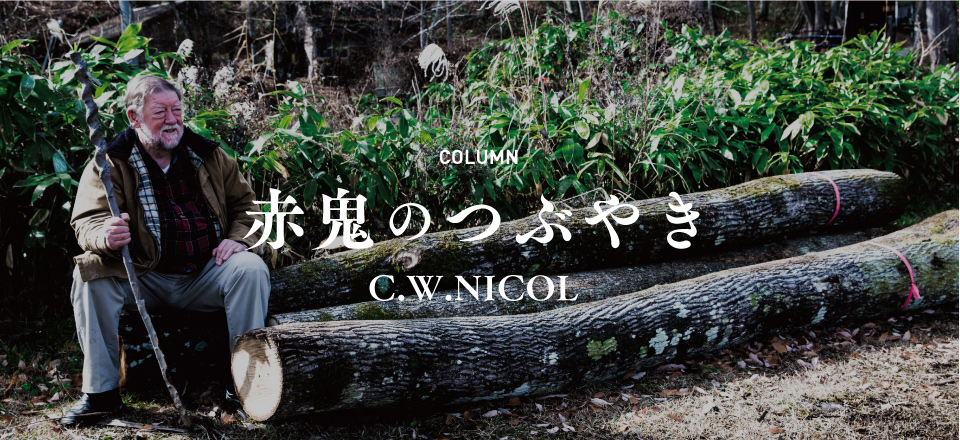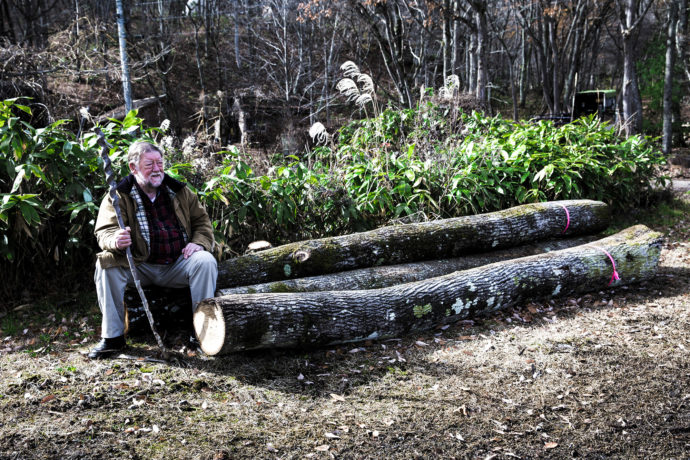Column
【赤鬼のつぶやき C.W.ニコル】ケヤキ(Japanese zelkava)
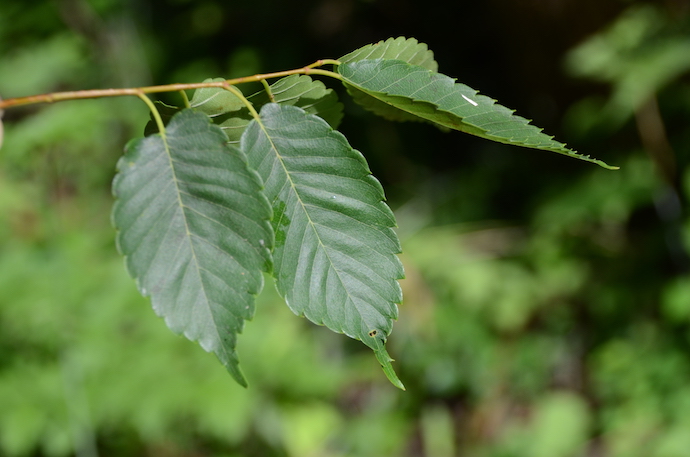
ケヤキは日本、韓国、中国や台湾に自生しています。1830年にオランダへ初めて持ち込んだのがフィリップ・フランツ・シーボルトです。その木陰が愛され、カナダのトロント、アメリカのニューヨークなど世界中に広まりました。欧米では、立ち枯れ病で枯れてしまったニレの街路樹に代わって重宝されるようになりました。ケヤキはこのカブトムシが持ち込んだ病原菌に耐性があったからです。
ケヤキは落葉樹の仲間です。短い幹からたくさんの枝が分岐しているために、丸い王冠のような樹形に育ち、高さは30メートルほどになります。葉はシンプルな卵型の楕円で、縁がギザギザになっています。そして小さな黄緑色の花が密集して咲き、2.5から3.5センチの小さな房に実がつきます。すばらしい木陰をつくるだけでなく、葉が水分を蒸散させ、実際に気温を下げる効果を持っています。秋になると、葉は黄色、オレンジ色、赤など色とりどりに変化します。欧米で町に植えられることが多いのはこの彩りのためでもあるでしょう。太陽の光と湿気を好み、水はけの良い土地に育ちます。
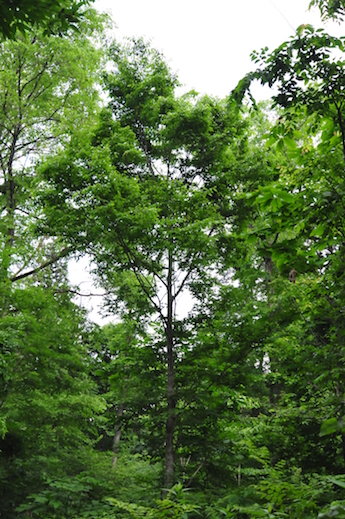
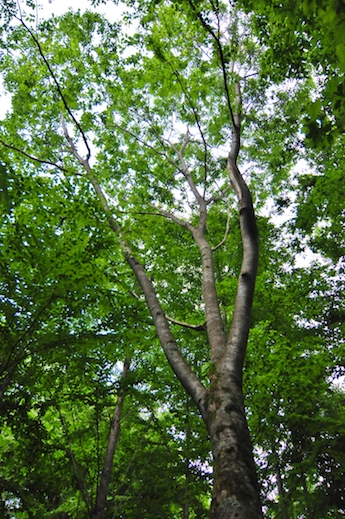
アファンの森では、20 年前に松木さんが植えたケヤキたちがとても良く育っています。枝は斜め上に向かって「バンザイ」しているようにも見えるのですが、この枝の形だと雪が自然に落ちるのです。数年以内にはこのケヤキの木立から数本を選んで、残りは別の場所に移植するか、間引いて伐ってしまうかを決めなくてはならないと思っています。
500万年から260万年前の鮮新世には、ヨーロッパ北部や北米にゼルコヴァと呼ばれるケヤキの仲間が定着したと言われています。そして氷河期には絶滅したことも化石が物語っています。
ケヤキはとても丈夫で、キメの細かい材になります。家具はもちろんのこと、伝統的な日本家屋では高級な床材として重宝されました。そして和太鼓の最高級品はケヤキから刳り出してつくります。盆栽でも人気です。
日本では、大都会で大きく育ったケヤキの木のほうが、野生のケヤキよりもよっぽど多くなっているようです。もしかしたら、近い将来には太鼓をつくれるぐらい大きなケヤキは、どこにも見つからなくなってしまうのではないでしょうか。
2017年7月
C.W. ニコル
写真提供:C.W.ニコル・アファンの森財団
KEYAKI
The keyaki (Zelkova serrata) is native to Japan, Korea, China and Taiwan. Keyaki were taken to Holland in 1830 by Philipp Franz von Siebold, and has since been planted, especially as city shade trees, all over the world, to cities like Toronto in Canada and New York in America. In America and Europe, keyaki has in place replaced the tall stately elms, formerly so common as city trees, which have been devastated by the Dutch elm disease. Keyaki is highly resistant to this beetle-carried fungus sickness.
Keyaki trees are deciduous, with short trunks from which spread many erect branches to form a roundly topped crown. Keyaki can grow to about 30 metres in height. It has simple ovate or oblong in shape, serrated along the edges. Keyaki grows tight groups of small, yellowish-green flowers, producing small drupes, 2.5 to 3.5 cms. The keyaki is a wonderful shade tree, with its leaves not only giving shade, but also actually cooling the air through evaporation of water through the leaves. In autumn the leaves turn yellow, orange or red, another reason why they are popular as ornamental park trees in America and Europe. It likes sun and moist, well-drained soil.
Our forester Mr. Matsuki planted a grove of keyaki about twenty years ago in our Afan woods and they are growing well. The upright ‘banzai’ branches shed the snow well. In a few years we will have to decide whether or not to go through all the work of transplanting some of them, either that or we will have to trim some of them out in order to let the remaining trees grow thick and strong.
Fossil records tell us that the genus zelkova was once common in ancient Northern Europe and North America during the Pliocene period (5.3 to 2.6 million years ago) but they vanished during the ice ages.
Keyaki produce strong, finely grained timber, used for furniture and, in the past, for very fine flooring in traditional Japanese houses. Keyaki are also ideal for making the great Japanese taiko drums. Keyaki are also a favoured tree for bonsai.
Big, mature keyaki trees are probably more common in big modern Japanese cities than they are in the wild, so I wonder in the future where they will get tree trunks big enough to make the great taiko drums in the future?
C.W.Nicol
June 18. 2017
C.W.ニコル
作家・1940年イギリス南ウェールズ生まれ。1995年日本国籍取得。カナダ水産調査局北極生物研究所の技官・環境局の環境問題緊急対策官やエチオピアのシミエン山岳国立公園の公園長など世界各地で環境保護活動を行い、1980年から長野県在住。1984年から荒れ果てた里山を購入し「アファンの森」と名づけ、森の再生活動を始める。2005年、その活動が認められエリザベス女王から名誉大英勲章を賜る。2011年、2016年に天皇、皇后両陛下がアファンの森をご視察された。


